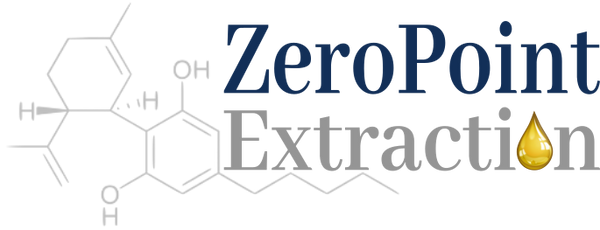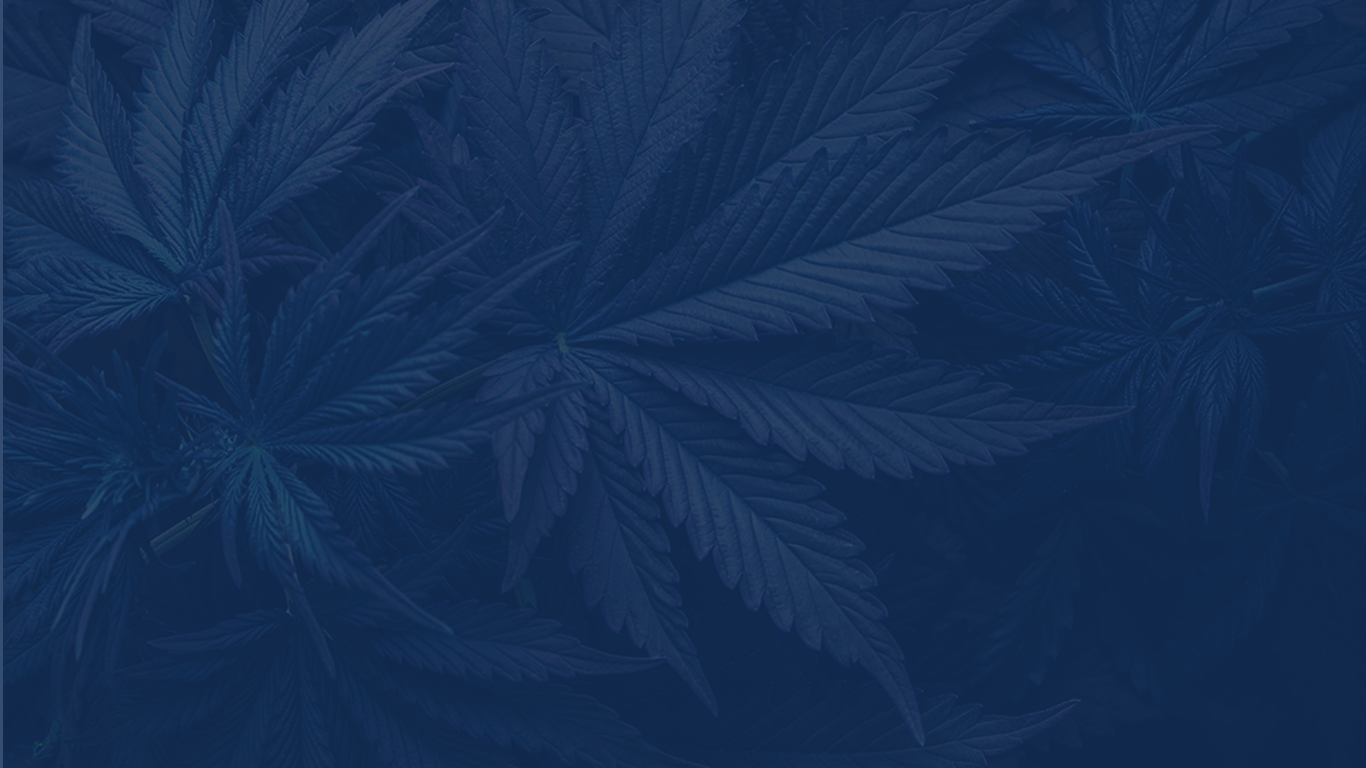Recent posts
-

-
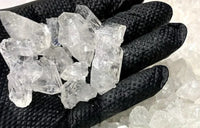 What Are THCa Diamonds?October 14, 2025
What Are THCa Diamonds?October 14, 2025 -
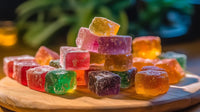 Delta 9 Gummies GuideOctober 8, 2025
Delta 9 Gummies GuideOctober 8, 2025 -
 Head High vs Body High: A Guide to Cannabis EffectsOctober 1, 2025
Head High vs Body High: A Guide to Cannabis EffectsOctober 1, 2025 -
 What is THCA Crumble?September 22, 2025
What is THCA Crumble?September 22, 2025 -
 10 Ways to Elevate Self-Care Awareness MonthSeptember 14, 2025
10 Ways to Elevate Self-Care Awareness MonthSeptember 14, 2025
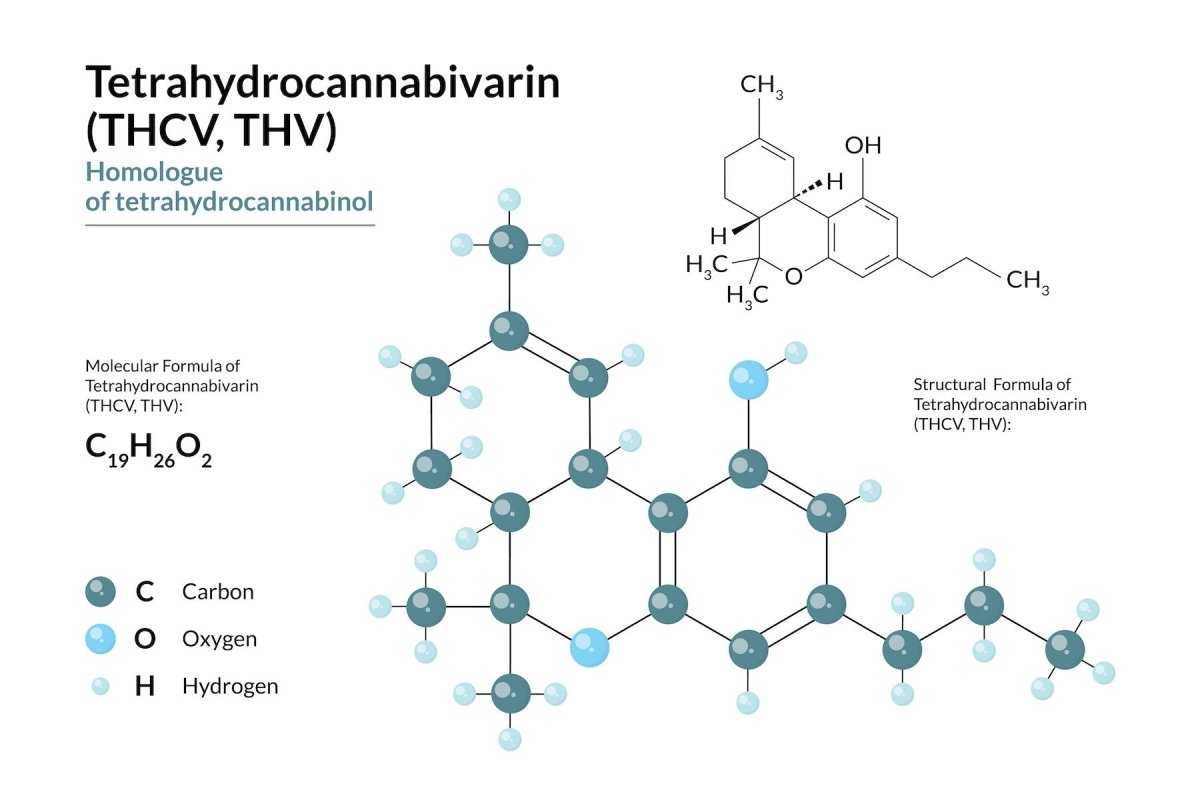
What is THCV?
By Zero Point
Table of Contents
TL;DR:
- THCV (Tetrahydrocannabivarin) is a natural cannabinoid found in cannabis, similar to THC in structure but with a shorter side-chain. It’s considered a “minor” cannabinoid because it occurs in much smaller amounts than major cannabinoids like THC or CBD.
- “Diet Weed” Nickname: THCV is often nicknamed “diet weed” due to its appetite-suppressing qualities. Unlike THC, which famously triggers the munchies, THCV can actually reduce hunger and even boost energy/focus without a strong high.
- Milder Effects: In typical doses, THCV is far less intoxicating than THC – about ¼ as potent by some reports. Most cannabis strains only have trace THCV, so you generally won’t feel a high from THCV alone in a regular smoke. At higher isolated doses, it can produce a shorter, upbeat buzz (often described as clear-headed and energetic).
- Potential Benefits: Early research suggests THCV may help with appetite control and weight management. It’s being studied for blood sugar regulation in diabetes and has shown anti-inflammatory properties in preclinical trials. Users report a focused, uplifting feel, making it appealing for daytime use or combining with THC to mellow out the high.
- Legality & Access: THCV is not explicitly illegal at the federal level in the U.S. and can be derived from hemp, making it more accessible in many areas. It remains rare in most dispensary products, but specialty producers offer THCV isolates, vapes, and edibles. Certain African sativa strains (like Durban Poison or Doug’s Varin) are naturally higher in THCV for those who prefer whole-plant sources.
Introduction
Cannabis is packed with hundreds of chemicals called cannabinoids, and one of the lesser-known stars is THCV. If you’re familiar with THC (the main psychoactive component of weed), think of THCV as its quirky cousin – similar name, totally different game. In fact, THCV stands for tetrahydrocannabivarin, and even though it sounds like THC, it behaves in unique ways. Curious why people are talking about “diet weed”? Or how THCV compares to THC? In this guide, we’ll break down what THCV is, how it works, its effects and benefits, how it differs from THC, its legal status, and how you can use or find it. By the end, you’ll have a solid handle on this intriguing cannabinoid and whether it’s worth a try for you.
What Exactly is THCV?
THCV is a natural cannabinoid chemical found in cannabis plants, closely related to THC in structure but with some key differences that give it unique effects. It’s considered a “minor cannabinoid” because, in most cannabis strains, THCV appears only in tiny quantities compared to heavy-hitters like THC or CBD. In fact, you could smoke an entire joint of a typical strain and ingest only negligible amounts of THCV – not nearly enough to notice its effects on its own. Because it’s so scarce naturally, THCV flew under the radar for a long time.
Cannabis breeders and extractors have recently taken interest in THCV, isolating it and even breeding special strains with higher THCV content. (For example, varieties like Doug’s Varin and Pineapple Purps were bred specifically to boost THCV levels.) In plant science terms, THCV is actually derived from a different precursor (CBGVA) than THC is, which is one reason it shows up more in certain landrace sativas (notably from Africa) than in common hybrids. The bottom line: THCV is part of the cannabis family, but it’s a rare find unless you seek out strains or products that emphasize it.
Like other cannabinoids, tetrahydrocannabivarin is formed in the trichomes of the cannabis plant. It has a very similar molecular makeup to THC, with one major distinction – THCV’s chemical structure has a shorter side chain (only 3 carbon atoms long, versus THC’s 5-carbon chain). That might sound like chemistry gibberish, but this small structural tweak is exactly why THCV acts so differently in our bodies. (We’ll see how in a moment when we talk about effects.)
In summary, THCV is its own cannabinoid – not the same as THC. It’s naturally produced by cannabis (especially some sativa strains), but usually in trace amounts. Think of THCV as a special ingredient in cannabis that you might not notice unless it’s isolated or enhanced. If THC is coffee providing a rush, THCV is more like green tea: subtler, with a different kind of kick.

THCV’s recent surge in popularity comes from both scientific curiosity and consumer interest. Researchers are studying it for potential health benefits (more on that soon), while cannabis enthusiasts are excited about its clear-headed effects. The photo above shows a cannabis leaf – the source of THCV and dozens of other cannabinoids. Even though THCV is present in the plant in only small amounts, modern extraction techniques can isolate this compound so we can better understand and enjoy it on its own.
How Does THCV Work in the Body?
So what actually is THCV doing when you consume it? This boils down to how it interacts with our endocannabinoid system, particularly the CB1 and CB2 receptors in our brains and bodies. Those are the same receptors THC binds to – but THCV behaves a bit like a shape-shifting key at these receptor sites.
At low doses, THCV acts as a CB1 receptor antagonist. In plain English, that means it blocks or dampens the activation of the CB1 receptor. Since CB1 is the receptor THC latches onto to get you high (and hungry), THCV in small amounts can actually reduce THC’s ability to activate CB1. The result? Less of a high and less appetite stimulation. Essentially, a little THCV can pump the brakes on some of THC’s effects – which is why people say it curbs the munchies and keeps the mind clearer.
However, at higher doses, THCV flips its behavior. It becomes a CB1 receptor agonist, meaning it does stimulate the receptor (similar to THC, but in its own way). High-dose THCV by itself can produce a psychoactive effect, though users report it as a more energizing, focused, and short-lived buzz compared to THC’s potent high. Think of THCV’s effect like a light switch dimmer: a little bit keeps things dim (blocking the receptor), a lot turns things up (activating the receptor), but it never gets as bright as THC’s full blast.
This dose-dependent switch is pretty unique. What it means for consumers is that THCV won’t really get you high in normal amounts found in flower, but if you take a concentrated form, you might feel a mild, clear-headed euphoria. It’s often described as “THC-lite” – providing a sense of alertness and uplift without the heavy stoned feeling or anxiety that THC can sometimes cause. Also, any high from THCV tends to kick in faster and fade sooner than a standard THC high.
On the flip side, when THCV is alongside THC (like in a strain that has both), it may modulate the overall experience. Because THCV can antagonize CB1 at lower levels, it might tone down THC’s intensity and especially reduce the appetite boost from THC. This is why THCV is being explored as a way to prevent overeating in cannabis users – it potentially blocks the munchies by interfering with THC’s hunger signals.
In summary, THCV works by targeting the same receptors as THC but with opposite effects at low vs. high doses. Low doses = blocking the receptor (no high, less hunger); high doses = activating the receptor (a mild high). It’s a fascinating dual action that underlies many of THCV’s reported effects and benefits.
Effects of THCV: Does THCV Get You High?
One of the first questions people ask is, “Will THCV get me high?” The answer: not in the way THC does, and usually not at all in typical use. Here’s the breakdown of THCV’s effects:
- Psychoactive Effects: In most cases, consuming THCV in a cannabis product won’t produce a noticeable high. Traditional strains have so little THCV that it gets overshadowed by THC’s effects. Users often don’t realize it’s there. Older research even labeled THCV as non-psychoactive, due to these minimal effects at common doses. However, if you take a purified THCV (like an extract or isolate) at a high dose (100+ mg), studies and anecdotal reports say you can feel mild psychoactivity – often described as uplifting, clear-headed euphoria without the heavy sedation. It’s sometimes likened to a caffeine-like high or a focused sativa buzz. Notably, even at these high doses, THCV’s high is reported to be shorter-lasting than THC’s high.
- “THC-lite”: A common way to describe THCV’s effect is “THC-lite.” Imagine the psychoactive intensity of THC turned way down, and the tone of the experience shifted to energetic and alert. For example, one human study found low doses made people feel more energetic, and higher doses gave a mild sense of euphoria and being “under the influence,” but with no impairment. In practical terms, someone using THCV might feel a subtle mood lift and mental clarity, rather than a strong intoxicating high. Many consumers actually seek out THCV for daytime use because of this functional, get-things-done vibe.
- Appetite and Body Effects: Unlike THC, which famously triggers hunger (the munchies), THCV has the opposite effect – it suppresses appetite. After using THCV, you’re more likely to forget about that snack rather than ravage your fridge. Some users even report a slightly stimulating, jitter-free energy boost, almost like a motivator to be active. Physically, THCV doesn’t typically cause the heavy body load or couch-lock that high THC doses can. Instead, it might even sharpen your senses or give a light feeling. Importantly, because THCV’s buzz (if it occurs) is shorter, you also come down from it faster, often without the prolonged grogginess.
- Mood and Clarity: THCV is often noted for enhancing focus and clear-headedness. People have described feeling alert, motivated, and less prone to anxiety with THCV. In fact, some consumers who get anxiety or heart-race from THC find that THCV’s presence makes their experience calmer or more controlled. This might be due to that CB1 blocking action at low doses preventing some of THC’s overshoot.
In summary, THCV alone generally won’t get you “stoned” in the traditional sense. You’re not likely to get red-eyed, giggly, or mentally clouded from it. At most, large doses of pure THCV give a brief, lucid high that’s quite different from THC’s. This makes THCV appealing to those who want some of the cannabis experience (euphoria, uplift) without the stronger intoxication. It’s a cannabinoid you could use and still feel mostly in control and productive. Of course, everyone’s body is different, so effects can vary – but overwhelmingly, THCV is considered mild and manageable on the psychoactive front.
(And if you combine THCV with THC, don’t forget: THCV might reduce the intensity of your THC high by blocking receptors. So mixing them could lead to a more moderate overall effect than THC alone.)
Benefits of THCV: Why Are People Interested?
Beyond its unique high (or lack thereof), THCV is drawing attention for a range of potential health and wellness benefits. While research is still in early stages (mostly animal studies and small human trials), the findings so far are promising. Here are some of the key potential benefits of THCV that have scientists excited:
- Appetite Suppression & Weight Management: THCV’s appetite-curbing effect has earned it the nickname “diet weed” for a reason. Low doses of THCV (5-10 mg) have been shown to effectively reduce appetite in studies. In one animal study, obese mice given pure THCV ate less food than those not given THCV. Unlike THC, which can prompt weight gain by increasing hunger, THCV could potentially aid weight loss or weight control by making you feel less hungry. Some research even suggests THCV may increase satiety (the feeling of fullness) and rev up metabolism, helping the body burn energy more efficiently. However, experts caution that using cannabis or THCV as a weight-loss strategy is not yet backed by enough evidence.
- Diabetes and Blood Sugar Control: A particularly exciting area of study is THCV’s effect on blood sugar and insulin. Research has found that moderate doses of THCV (10-20 mg) can help regulate blood glucose levels and reduce insulin resistance. In a small 2016 human trial with type 2 diabetics, THCV improved blood sugar control and pancreatic function. The authors noted THCV could be a novel therapeutic agent for managing type 2 diabetes. This means THCV might help diabetics control their condition, possibly by improving how the body processes sugar. Again, it’s early and not a replacement for standard treatments, but it shows THCV’s influence extends beyond the brain into metabolic effects.
- Energy and Focus Enhancement: Many users anecdotally report that THCV gives them a clear-headed burst of energy and focus. It’s even been playfully dubbed “weederall” (a nod to Adderall) by some, because of its potential to sharpen attention and motivation. In a controlled study, THCV users scored higher on attention tests compared to placebo, hinting that it might improve concentration. This could make THCV attractive for those seeking a cannabinoid that supports productivity and alertness (think daytime use or even as a coffee complement). It’s not a jittery stimulant, but rather a gentle nudge towards mental clarity.
- Potential Neuroprotective & Cognitive Benefits: Early research suggests THCV might have anti-inflammatory and neuroprotective properties. For example, a 2010 study found THCV reduced inflammation and pain in mice, partly via actions on CB1/CB2 receptors. There’s also interest in THCV for conditions like Alzheimer’s and Parkinson’s, as it may help protect brain cells or improve motor control in certain models. One study indicated THCV has anticonvulsant effects, meaning it could possibly help with seizures. These areas are very much under investigation, so while we can’t draw firm conclusions, THCV appears to interact with the nervous system in ways that could be therapeutically useful (reducing inflammation, protecting neurons, etc.).
- Anxiety and Mood: Some consumers find THCV to be anxiolytic, meaning it reduces anxiety, especially in combination with THC. By tempering THC’s activity at CB1, THCV might lead to a calmer experience for those prone to cannabis-induced anxiousness. Additionally, THCV on its own has shown potential to reduce panic attacks in an animal model (research on stress-related panic behavior). It might also have an antidepressant-like effect in some cases by activating serotonin receptors – though this is more speculative. At the very least, the focused, clear high from THCV tends to come without the paranoia or racing thoughts that some high-THC strains can cause.
It’s important to remember that most of these benefits are still being researched. While results so far are encouraging – appetite suppression, improved insulin sensitivity, anti-inflammatory effects, etc. – large-scale human studies are limited. So you won’t find doctors prescribing THCV just yet, but you will find a growing number of wellness enthusiasts experimenting with it. If you’re interested in THCV for a specific health goal (like weight control or diabetes), keep an eye on upcoming research and consider talking to a medical professional knowledgeable in cannabis.
For now, the takeaway is that THCV offers a profile of effects quite distinct from THC and other cannabinoids, potentially making it useful for niche applications (like an aid in dieting, or a daytime study aid). Its unique ability to dampen appetite and boost energy sets it apart in the cannabis world.
THCV vs. THC: What’s the Difference?
They may sound alike, but THCV and THC are very different compounds. Here’s a quick comparison to highlight the key differences between THCV and THC:
- Chemical Structure: Although both molecules look similar, THCV has a shorter hydrocarbon side chain than THC. THC’s side chain has 5 carbon atoms, whereas THCV’s has only 3. This slight structural tweak is why THCV is called a “propyl” cannabinoid (shorter chain) versus THC’s “pentyl” classification. That shorter tail drastically changes how it fits into our cannabinoid receptors, leading to different effects. (Think of THC and THCV like keys that almost look the same, but THCV’s key has a bit shaved off – it doesn’t unlock the door in quite the same way.)
- Psychoactivity: THC is strongly psychoactive, producing a classic high, whereas THCV is much milder. In low doses, THCV is non-intoxicating (it won’t noticeably get you high at all). Even in high doses, THCV’s psychoactive effect is about 1/4 the intensity of THC’s and shorter-lived. So, THC = potent long-lasting high; THCV = light, brief high (if any). Many people can use THCV and still function with a clear head, which isn’t always the case for THC.
- Effect Profile: THC typically causes relaxation, euphoria, altered perception, and stimulates appetite, but it can also trigger anxiety or couch-lock in some. THCV, in contrast, tends to increase energy, focus, and suppress appetite. Users call THCV’s effect “uplifting” and even compare it to an energizer. Essentially, THC is known for “getting you stoned and hungry,” while THCV is known for “keeping you alert and not hungry.”
- Medical Potential: THC is well-known for pain relief, nausea reduction, appetite stimulation, and so on (and is even used medicinally for these purposes). THCV is being researched for metabolic benefits (weight loss, diabetes), possible neuroprotective effects, and anxiety reduction. They each have different strengths: for example, THC might help a chemotherapy patient eat, whereas THCV might help someone with obesity eat less.
- Natural Abundance: THC is abundant in most cannabis strains – it’s the main ingredient in “marijuana” and can compose 20%+ of a flower’s weight. THCV is rare, usually well below 1% in cannabis by dry weight. Only specific strains (often African sativas like Durban Poison, or hybrids like Doug’s Varin) have notable THCV content. For most users, every puff of cannabis contains a lot of THC but only a trace of THCV. This also means historically it’s been easier to access THC (in any weed) than THCV (which required special sources).
- Legal Status: THC (∆9-THC) is strictly regulated/illegal at the federal level in the U.S. (Schedule I substance) and likewise banned in many countries for recreational use. THCV, on the other hand, sits in a legal gray area. It is not explicitly listed as a controlled substance in the U.S., especially if derived from hemp under the 2018 Farm Bill. This means hemp-derived THCV products can be sold in many states, giving THCV a broader legal reach at the moment. (We’ll dive more into legality in the next section.) In short: THC will get you in legal trouble in places where cannabis is illegal, whereas THCV might slide by legally if it comes from hemp.
- Use in Products: Because of legality and availability, THC is in countless products (flowers, edibles, vapes, medicines) wherever cannabis is legal. THCV is newer to the market, often found in specialty items like THCV vape cartridges, oil tinctures, or “energy” gummies marketed for focus. Many THCV products are actually made by extracting CBD from hemp and chemically converting it to THCV (since getting it naturally from cannabis is hard). So, their presence in the consumer market is growing but still limited compared to THC products.
In summary, THCV and THC might share roots in the cannabis plant, but they offer very different experiences. THC is the classic psychoactive cannabinoid we all know; THCV is like its intriguing little sibling that does almost the opposite in some ways. From how they make you feel (chill vs. sharp) to how easy they are to find (common vs. rare) and legal status (restricted vs. semi-legal), these two cannabinoids shouldn’t be confused. Both have their place, but if you’re considering trying THCV, don’t expect it to behave just like THC – be ready for a different ride altogether.
To visualize the difference, check out the chemical structures of THC vs THCV in the image below. You can see they’re nearly identical except for that shorter tail on the THCV molecule – a small change that makes a big difference in effect.

Image: Side-by-side comparison of the molecular structures of THC and THCV. That shorter side chain (propyl group) on THCV (right) is what differentiates it from THC (left) and influences its unique effects.
Is THCV Legal?
Legality is a big question for any cannabis-related compound. The legality of THCV is a bit complex, but generally more permissive than THC in many places. Here’s the breakdown:
In the United States, THCV is not explicitly listed as a controlled substance under federal law. The Controlled Substances Act bans THC (and any analogs of THC that are “substantially similar” in structure and effect) as Schedule I substances, but THCV doesn’t neatly fall under that definition. Why? Because THCV is structurally distinct enough – it’s not a direct isomer or derivative of THC, and it’s not one of the named banned cannabinoids. Moreover, the 2018 Farm Bill legalized hemp and its derivatives as long as delta-9 THC content is below 0.3%. THCV can be derived from hemp (usually by converting CBD), so hemp-derived THCV products are arguably legal federally. This means companies can (and do) sell THCV vape carts, oils, etc., in many states, even those without full cannabis legalization.
However, the legal status is a gray area. There’s something called the Federal Analogue Act, which says if a substance is “substantially similar” to a Schedule I drug and intended for human consumption, it could be treated as Schedule I as well. One could argue THCV is similar to THC, given the molecular resemblance. The good news (for THCV fans) is that many legal experts believe THCV is different enough from THC to not be considered an illegal analog, especially given its notably different effects (non-intoxicating in low doses, etc.). So far, we haven’t seen major enforcement against THCV products in the U.S., and they are openly sold online and in some shops. But it’s wise to stay updated, as regulations can change.
State laws can vary too. Some U.S. states have specifically banned certain analogs or are stricter on anything that isn’t explicitly legal. As of now, though, THCV flies under the radar in most state laws, especially if it’s hemp-derived. Always ensure the product’s delta-9 THC is under 0.3% to be considered hemp legal.
Internationally, laws differ. For example, in the UK, THCV is considered a controlled substance (a Class B/Schedule 1 drug, same category as THC). This means it’s illegal to produce or sell, except for research under a license. Other countries haven’t clearly addressed THCV yet, but many have blanket bans on “cannabis extracts” which could be interpreted to include THCV.
Bottom line: In many places, THCV is legal or at least not explicitly illegal, particularly when sourced from hemp. The U.S. currently allows hemp-derived THCV products, which is why you might see THCV for sale even in states where recreational marijuana isn’t legal. Nonetheless, it’s a gray area and subject to change. If you’re unsure, check your local regulations or consult a legal expert. And as always with cannabinoids: buy from reputable sources that follow hemp laws and provide third-party lab tests – that way you know you’re on the right side of the law (and getting a quality, compliant product).
How to Use THCV (and Where to Find It)
If you’re interested in trying THCV, you might be wondering how to get it and use it, given it’s not as common as standard THC or CBD products. Here’s a quick guide:
1. Natural Sources (Cannabis Strains): A handful of cannabis strains are known for higher THCV content. These are mostly sativa landrace strains from Africa and Southeast Asia. Classics like Durban Poison (a South African sativa) are often cited for their THCV levels (typically around 1% or a bit more, which is high for THCV). Other strains bred specifically for THCV include Doug’s Varin (named for high THCV) and Pineapple Purps, which can have around 3-5% THCV. There’s also Jack the Ripper and Pink Boost Goddess, each reported around 4-5% THCV. If you live in an area with a robust dispensary scene, you might find flower or pre-rolls of these specialty strains. Consuming THCV via the plant (smoking or vaping the flower) will also include THC and other cannabinoids, so the experience is a mix – but you may notice less hunger and a more lucid high if the strain is truly rich in THCV. 2.
2. THCV Concentrates and Edibles: Thanks to growing demand, companies are now producing THCV-specific products. You can find THCV vape cartridges, which contain distilled THCV (often blended with other cannabinoids or terpenes for flavor). These provide the most immediate way to feel THCV’s effects in isolation – a few puffs and you might notice that focused head-space. There are also THCV oil tinctures (drops you take sublingually) and THCV gummies or capsules. Edibles and tinctures will take longer to kick in (30-60 minutes), but can deliver a steady dose of THCV for several hours. Keep in mind, a lot of THCV products in the market are actually made by converting hemp-derived CBD into THCV in a lab. That’s not necessarily bad, but it means you should look for lab-tested products to ensure purity (no residual solvents or unwanted compounds). Start with a low dose (perhaps 5-10 mg of THCV) to gauge your individual reaction, especially if it’s an edible which can be potent at higher amounts.
3. Stacking with Other Cannabinoids: Some users combine THCV with THC or CBD for a tailored effect. For instance, a THCV + THC blend might give a balanced high where THCV’s clarity tempers THC’s intensity. In fact, some product makers offer ratio tinctures or vapes (like 1:1 THC:THCV). A THCV + CBD combo could be very non-intoxicating but potentially great for daytime focus and calm, since CBD adds relaxation without high and THCV adds alertness. Experimentation should be cautious – try small combos and see how you feel. Since THCV can curb THC’s effects, if you mix them, you might need less THC to avoid overdoing it.
4. Where to Buy THCV: Because THCV products are often derived from hemp, you can purchase them online in many regions. Always choose reputable retailers or dispensaries that provide Certificates of Analysis (lab results) for their products. This ensures you’re actually getting THCV at the advertised potency, and that it’s free of contaminants. If you’re a consumer, check specialty cannabis product websites or ask at dispensaries for THCV items. If you’re in the industry or looking for bulk THCV, there are companies that specialize in rare cannabinoids. For instance, you can source wholesale THCV extracts and products from suppliers like Zero Point Extraction, which offers bulk cannabinoids for product manufacturers. Zero Point’s wholesale page is an example of where businesses obtain high-purity THCV for creating consumer products. This kind of internal source ensures that brands can infuse THCV into edibles, vapes, or tinctures reliably. (If you’re interested in bulk THCV or other rare cannabinoids for your own formulations, check out our wholesale THCV products page for more info.)
5. Tips for Using THCV: When you try THCV, set your expectations accordingly. If you’re using a pure THCV product, don’t expect a big psychoactive punch – you might feel subtle effects like a mood lift or appetite suppression. Plan your session based on your goals: for example, take THCV in the morning or afternoon if you want an energy/focus boost (doing so at night could be counterproductive if it makes you too alert). If your goal is to avoid snacking, you might dose THCV before a meal time to see if it reduces your hunger. Always start low, especially with edibles, to find the sweet spot where you notice benefits but feel comfortable. And as always, keep hydrated and listen to your body.
Lastly, be aware that because THCV is less common, it can be pricier than CBD or even THC products. Its rarity and the process to produce it make it a bit of a premium cannabinoid. But as popularity grows, we may see prices come down and availability go up.
Bottom Line: Is THCV Worth a Try?
THCV is an exciting cannabis compound that offers a truly different experience from THC. It won’t replace your go-to THC strain for a heavy high, but it could be the perfect cannabinoid for certain uses and users. If you’re someone who loves the idea of an energizing, clear-headed boost with no munchies attached, THCV might be right up your alley. It’s like cannabis with a cup of coffee vibe – keeping you sharp and potentially even helping with goals like staying fit or focused.
THCV’s early research is promising. It’s easy to see why there’s buzz around a cannabinoid that might help regulate appetite and metabolism without causing intoxication. However, remember that we’re still in the early days of understanding THCV.
Legally, THCV’s relative accessibility (in many places where THC is off-limits) means you might actually be able to try it even if you can’t legally buy THC. This has opened the door for a lot of experimentation and self-reports. Just make sure any product you try is from a trusted source and complies with your local laws.
In the end, whether THCV is “worth it” depends on what you’re looking for. If you’re a cannabis consumer curious about new experiences, THCV offers a novel twist – a light, lively effect that can complement your usual regimen (for example, a THCV-rich strain for daytime productivity, saving the heavy THC stuff for bedtime). If you’re part of the general public interested in wellness, THCV might appeal as a cannabinoid that provides some benefits without the high associated with marijuana.
Give it a try in a low-stakes setting first and see how you feel. You might find it’s a game-changer for your focus and appetite, or you might find it very subtle. Either way, it’s undoubtedly a cool piece of the cannabis puzzle that’s worth knowing about. As research expands and more products hit the market, THCV is likely to become a bigger player in the cannabis scene – so now you’re ahead of the curve in understanding what THCV is and why it’s making headlines.
